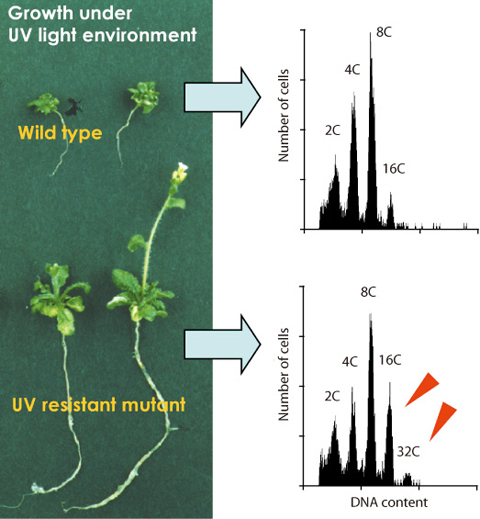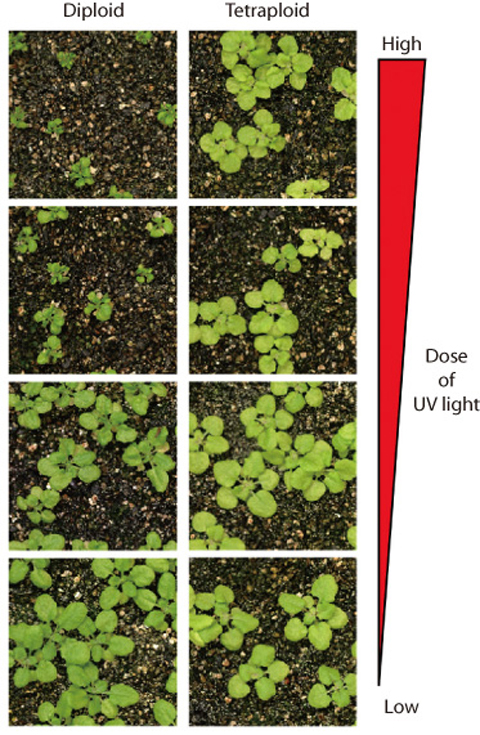
Fig.4-16 Growth of UV resistant mutant and the wildtype under UV light environment and their ploidy profiles

Fig.4-17 Comparison of UV sensitivity between diploid and tetraploid Arabidopsis
Since plants utilize energy from sunlight, they are inevitably exposed to solar ultraviolet (UV) light. The UV light cause significant damages to plants, as seen in crop yield reduction and leaf burn. Furthermore, the UV light that we experience has increased due to the depletion of the ozone layer.
Plants possess various protective mechanisms to cope with UV light. UV absorbing compounds such as flavonoid pigment attenuate the damaging solar UV light. The UV light that is not shielded by the UV absorbing compounds induces DNA damage, predominantly pyrimidine dimers. The pyrimidine dimers are efficiently repaired by the repair enzyme photolyase. Previous studies have revealed various mechanisms for this, but we thought there might be other unidentified mechanisms protecting against UV light.
We succeeded in isolating Arabidopsis mutants that are hyper-resistant to UV light using ion beams as a mutagen. The fresh weight of the mutant plants grown under UV light was more than twice that of the wild-type plants (Fig.4-16). We found that the mutant had a mutation in the gene named UVI4. This mutation resulted in an increased nuclear DNA content in the leaf and stem cells (Fig.4-16). Therefore, it is thought that the increased gene copy number due to the increased DNA content confers UV tolerance. Supporting this idea, tetraploid plants that have double the nuclear DNA content of diploid plants are hyper-resistant to UV light (Fig.4-17).
From these results, we concluded that nuclear DNA content is an important factor in tolerance to solar UV light. These results will provide a clue to understand how plants adapt to UV light environments. This mechanism might be utilized in various plant species to increase the crop yield or to protect them from leaf burn.